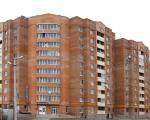What is an encumbrance, types, registration procedure
When registering mortgage housing for ownership, the owners are notified that the encumbrance is an integral requirement for the bank's collateral, which requires mandatory registration with the state registering authority. Information about an apartment with an encumbrance is entered in the USRR, which contains all the information about the presence or absence of any restrictions on property rights.

The control over restrictions with the help of the USRR serves as a guarantee of the security of real estate transactions and informs the owners, when concluding purchase contracts, of the absence of obstacles in the right to full disposal of the property.
The essence of the burden
The encumbrance mark serves as an indicator that individual citizens or organizations that are not homeowners have certain powers. The law provides for a procedure for mandatory recording of encumbrances in the USRR by new owners.
The value of the encumbrance lies in the presence of conditions that restrict the owner's right to dispose of housing due to certain circumstances and rights on the part of outsiders. What is an encumbrance on an apartment for its owner depends on the cause of its occurrence, based on:
- Agreement with the owner;
- Court ruling.
In certain circumstances, the encumbrance will mean the imposition of obligations (when registering real estate on the basis of an annuity agreement, life maintenance of a dependent).
The release from the encumbrance arises after the grounds for its existence disappear. For example, an encumbrance due to a mortgage agreement and a mortgage on an apartment is removed after the full repayment of the loan debt in the absence of financial obligations of the borrower to the bank.
Documents confirming the fulfillment of obligations under the mortgage give grounds to extinguish the entry in the USRR on the restriction. In the certificate of ownership, a special note is made about the removal of the encumbrance.
In a situation where the owner of mortgaged housing does not fulfill financial obligations, the bank has the right to deprive the owner of the right to dispose of the housing and sell it to pay off the mortgage debt.
Types of restrictions
 The encumbrance of the right to property fully differs depending on the grounds on which it arose:
The encumbrance of the right to property fully differs depending on the grounds on which it arose:
- Mortgage lending and registration of collateral;
- Arrest of property by court;
- Prohibition to perform legally significant actions in relation to property;
- Rental;
- Annuity, dependent maintenance
- The presence of an easement;
- Trust management.
Mortgage
This basis is one of the most common reasons for registration of housing as a security collateral for the payment of a loan. Registration of a mortgage can become a measure of protection of the owner when transferring it to a trustee, limiting his rights and introducing a ban on the sale of property without the consent of the pledgor.
Rent
With the help of this action, the owner becomes the person who has concluded an agreement on the payment of funds with subsequent re-registration of the right. The issue of rent with a life support of a dependent person who transferred housing in favor of another owner.
Rent
When signing a lease agreement with the transfer of property for temporary use for commercial purposes, there is a restriction on the right to dispose of it. If the lease agreement is signed for a period of more than one year, it must be registered with the Rosreestr service, fixing the restrictions imposed on the right of disposal. In the event that it is planned to purchase a rental property, the new owner, who intends to terminate the rental relationship with the tenants, must notify the forthcoming termination of the contract for three months.
Arrest of the apartment
This basis arises according to a court order or by decision of a bailiff who has a case against the owner of the home. As a rule, the arrest procedure occurs when there is an outstanding debt after the consideration of the claim against the defendant in the courts. The arrest serves as a guarantee for the repayment of the debt by the debtor and is subject to withdrawal only upon full payment of the debt.
guardianship, easement
In the case of ownership of real estate by a minor or ward, actions in relation to it are performed by his legal representatives and in agreement with the guardianship authorities. This encumbrance applies to cases of buying a home with a child registered in this living space. Such an encumbrance can be removed by a court decision, since the registered minor is not a family member of the new owner. Restriction of rights based on the existence of an easement relating to land owners occurs with the possibility of obtaining compensation when public roads pass through the territory of the site.
Sale of encumbered property
The encumbrance remains in force until the repayment of the obligations that gave rise to its appointment.
In the case of a mortgage, the encumbrance significantly limits the right to dispose of immovable property. The borrower has the following rights:
- use housing;
- Live with your family members;
- Rent out.
Legally significant events are carried out only upon agreement with the credit institution, the holder of the pledge.
If planned, the bank insists on the full repayment of the loan at the expense of the borrower or real estate buyer.
Lifetime maintenance when selling an apartment provides for the notarized consent of the recipient of the rent.
The arrest and ban on registration implies the complete impossibility of selling housing until the situation is resolved and the encumbrance is removed. The sales contract becomes invalid.
When renting real estate, the encumbrance is removed after the expiration of the contract.
Terms of sale
Alienation of real estate in a situation of restrictions occurs depending on their nature. Mortgage housing can be re-registered subject to the preparation of the following list:
- Purchase and sale agreement with reference to the encumbrance;
- Transfer-acceptance certificate;
- Title documents for property;
- Original extract from the house book (composition of residents);
- Payment document confirming the payment of the fee for registration actions;
- Passports, identity documents of the parties.
Additional documents depend on the specifics of the transaction and the nature of the restrictions:
- in the case of a mortgage - the consent of the mortgagee;
- in case of rent - a notarized consent of the holder of the rent;
- in case of arrest of real estate - a court order or a decision of a bailiff to remove the restriction;
- property of a minor - permission of the guardianship authorities;
- - written consent of the spouse;
- trust management - an agreement on trust management; for an attorney - a contract of assignment.
Registration of an encumbrance
The procedure for registering an encumbrance on the right of ownership is carried out by a single Rosreestr at the time of re-registration of ownership to a new owner. The obligation to enter data on the existence of restrictions arises at the time of the conclusion of the transaction. In the future, such a measure will make it possible to secure any actions regarding property on the part of the owner and other parties involved in the process.
The process of issuing restrictions is carried out in the following ways:
- on behalf of the property owner;
- thanks to the actions of authorized state bodies, including the judiciary.
If the initiator of the introduction of restrictions is the court, the owner is notified of the changes (seizure) unilaterally.
Attention! Due to recent changes in legislation, the legal information in this article may be out of date!
Our lawyer can advise you free of charge - write a question in the form below:




